Tesla’s India Entry: What to Expect, From Model Lineups to Local Manufacturing
Tesla launches in India with Model Y, showroom in Mumbai, Superchargers, and eyes on local assembly—what it means for policy, legacy automakers, and India’s EV future.
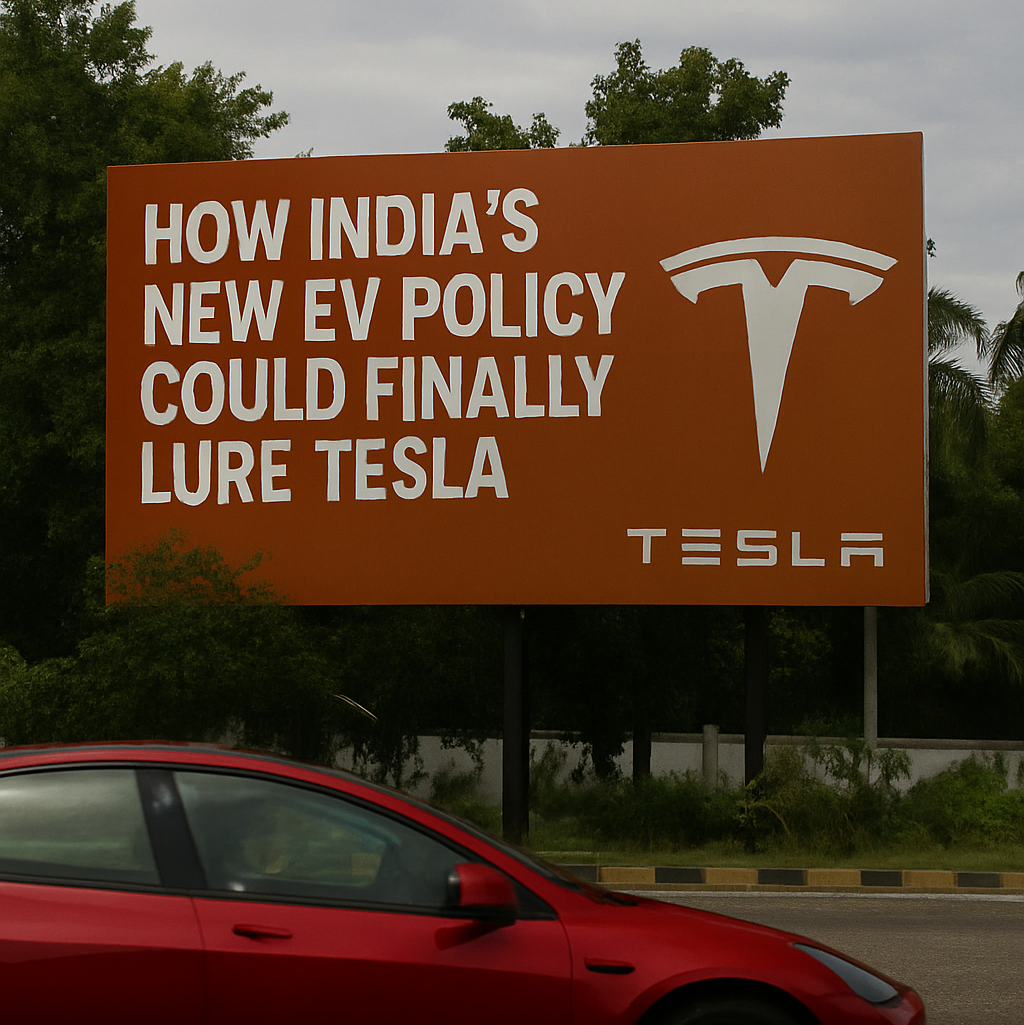
MUMBAI, July 16, 2025
Tesla has finally launched its first official retail showroom in Mumbai, ending years of delays and negotiations with Indian regulators. This event is a key moment for both Tesla and India's growing electric vehicle (EV) market.
As India’s automotive sector undergoes a shift towards electric models, driven by government support, rising fuel prices, and a push for greener infrastructure, Tesla's presence is set to change the market landscape. However, despite the excitement, Tesla's journey in India will be challenging.
Model Lineup: What’s Coming to India?
Tesla’s first offering in India will be the Model Y, imported as a completely built unit (CBU) from the Shanghai Gigafactory. It will be available in two versions: Rear-Wheel Drive (₹59.9 lakh) and Long-Range All-Wheel Drive (₹69.9 lakh). This SUV is a smart choice for the Indian luxury EV market.
Why the Model Y?
- SUV-style vehicles are increasingly popular among India’s urban wealthy.
- Its high ground clearance and spacious interior make it a good fit for Indian roads.
- It’s Tesla’s best-selling model globally, making up over half of its total deliveries.
What's next?
Industry experts believe the Model 3 sedan and the Cybertruck may arrive later, but only after Tesla clarifies tax incentives and production issues. A local assembly plan could also lead to a new compact model exclusive to India by 2026-27, priced around ₹30 lakh to compete with the Tata Nexon EV and Mahindra XUV400.
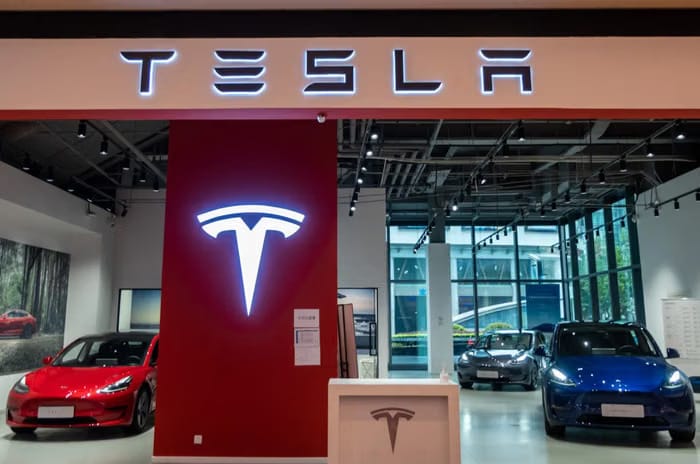
Is Local Manufacturing on the Cards?
Tesla’s entry raises an important question: Will it build a Gigafactory in India?
Several senior officials have noted that Tesla has discussed setting up a factory with the governments of Maharashtra, Gujarat, and Tamil Nadu. The central government’s new EV policy makes the prospects more appealing by reducing import tariffs to 15% for manufacturers investing at least $500 million and beginning local production within three years.
India wants genuine investment, focusing on deep localization rather than mere assembly—battery cells, drive units, software stacks, and ultimately exports.
“Tesla’s entry is not just about selling 5,000 cars a year—it’s about integrating into India's future energy economy,” said EV industry analyst Shruti Wadhwa.
Current status:
Tesla has not confirmed a manufacturing facility but is seeking land near Mumbai and Ahmedabad. Reports indicate the company is also considering joint ventures with Indian suppliers for EV batteries and motors.
Price Barriers: Still a Rich Man’s Game?
Tesla’s imported Model Y, priced at ₹59.9–69.9 lakh, is almost double its price in the U.S. Why?
- Import duty for CBUs stands at 70–100%.
- No FAME-II subsidies apply to imported vehicles.
- Logistics costs and currency changes increase prices.
This means Tesla will initially focus on a luxury niche, targeting high-net-worth individuals and tech-savvy buyers in major cities.
However, this pricing strategy serves several goals:
- It allows time for brand development.
- It provides a chance to test Indian roads and service conditions.
- It lays the groundwork for negotiating local manufacturing terms.
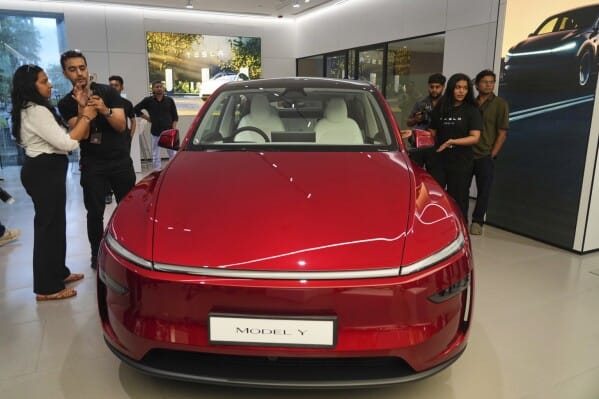
Charging Ahead: Will Infrastructure Keep Up?
Tesla plans to install its V4 Superchargers along major Indian highways and in urban centers, starting with the Delhi–Mumbai–Bengaluru routes. These chargers provide up to 250 kW, enough to charge a Model Y to 80% in about 15 minutes.
This initiative aims to offer convenience and establish Tesla’s charging technology as the standard. However, India’s EV infrastructure still lags:
- About 9,000 public chargers are currently operational across the country.
- Most chargers do not support fast charging.
- Power outages and unreliable grid connectivity are significant issues in smaller towns.
“Without grid improvements, Tesla’s chargers may remain unused. India needs investment from both public and private sectors to build EV-ready infrastructure,” stated Ankit Mehra, energy policy advisor at NITI Aayog.
Policy Framework: India’s New EV Rules Explained
To attract Tesla and other competitors like VinFast and Lucid, India updated its EV import policy in early 2024:
- A 15% import duty on EVs priced over $35,000, if the company agrees to start local production within three years.
- A minimum investment of ₹4,000 crore ($500M) and a requirement to begin production within 36 months.
- Applications should be submitted through a single-window system with Invest India.
Additionally, Tesla can take advantage of:
- The FAME-II scheme for local manufacturing.
- PLI incentives for battery and auto components.
- State-level subsidies: Maharashtra, Tamil Nadu, Telangana, and Gujarat offer tax breaks, land subsidies, and benefits for the EV ecosystem.
State-Level War: Who Will Win the Gigafactory?
Maharashtra
Hosted the Mumbai showroom launch. Provides excellent infrastructure and port access via Nhava Sheva, along with a large EV supply base in Pune–Nashik.
Gujarat
Known for a pro-business environment. Previously, Tesla's the preferred choice in 2021. Its location near Mundra and Dholera smart city zones is ideal for exports.
Tamil Nadu
Nicknamed “Detroit of India” for a reason—home to Hyundai, Ola Electric, and TVS. Offers a strong, skilled labor force and R&D facilities.
Telangana
Actively promoting investments. Provides Tesla with a “green EV corridor” around Hyderabad and access to tech startups.
Each state is offering incentives, including free land, expedited approvals, and subsidies for training local talent in the EV sector.
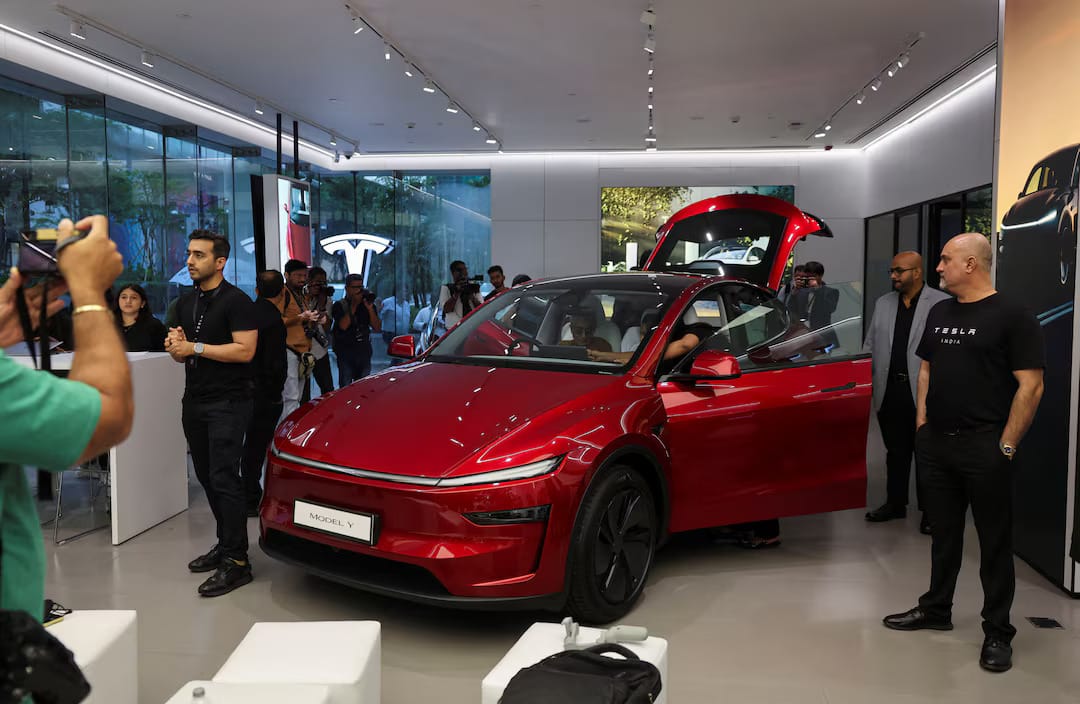
Impact on Indian Automakers: Disruption or Awakening?
Tesla’s entry could disrupt or invigorate India’s established automakers.
Tata Motors leads India’s EV market with about 80% share, thanks to affordable models like the Nexon EV and Tiago EV. However, Tesla raises the expectations with its:
- Software integration
- Self-driving features
- OTA (over-the-air) updates
Mahindra and BYD are expanding but still lag in consumer recognition. Tesla's brand prestige could challenge mid-range EV manufacturers over time.
“Tesla isn’t here to take Tata’s lunch just yet. But it’s setting the stage for dinner in 2030,” noted industry analyst Kartik Parikh.
Global Strategy: Why India, Not China or Europe?
Tesla’s entry into India is not only about the domestic market; it also serves a geopolitical purpose.
Rising U.S.–China tensions have made manufacturing in Shanghai uncertain, while Europe's auto regulations are becoming stricter, limiting profit margins. In contrast, India offers:
- Political neutrality
- A young, skilled workforce
- Opportunities for exports to Southeast Asia and Africa
By opening a Gigafactory in India, Tesla diversifies its global supply chain and aligns with U.S. plans to lessen reliance on China.
Tesla’s India Play: Long-Term Vision, Short-Term Costs
Tesla's strategy for India is long-term:
- Immediate emphasis on building its brand and attracting high-end customers
- Mid-term aim to start local manufacturing for better pricing
- Long-term goal of turning India into a global EV export hub
However, this plan comes with challenges:
- Gaps in infrastructure
- Uncertain policies
- A market sensitive to price
- Competition from Chinese EV companies like BYD, which already has assembly lines in India
Yet, India’s demographic advantage and shifting policies could make it Tesla’s fastest-growing market outside the U.S. by 2030.
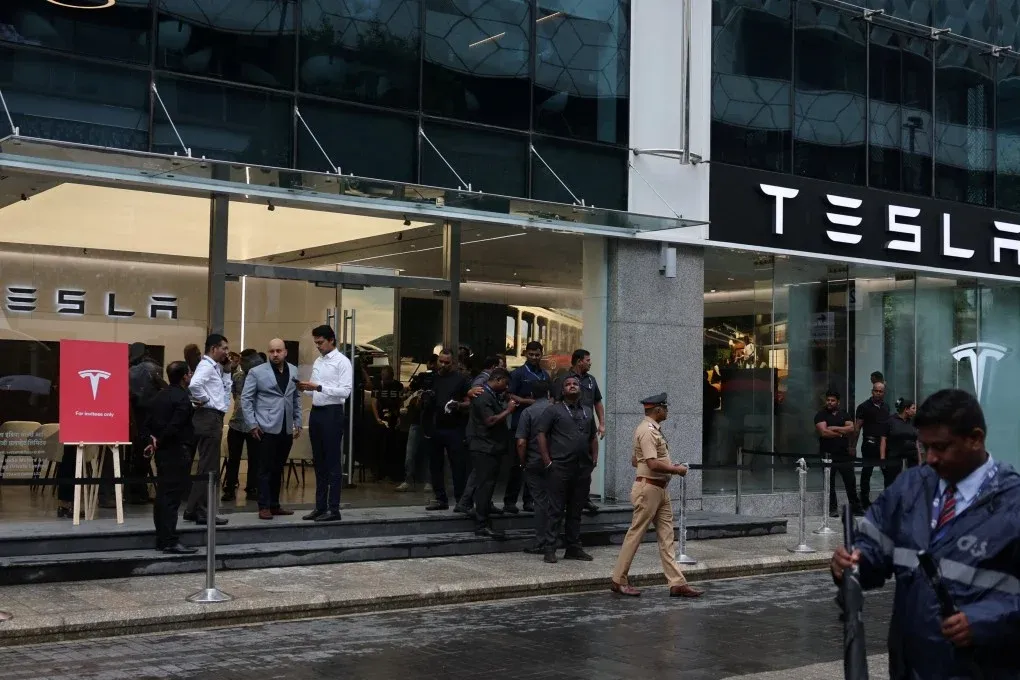
Strategic Roadmap: What Could Happen Next
Late 2025
- Model Y deliveries begin
- First Superchargers become operational
- Announcement on the selected state for the Gigafactory
2026
- Local sourcing of EV parts starts
- Assembly of the Model 3 or Model 2 in India
- Greater rollout of Superchargers in South and East India
2027–2028
- Made-in-India Tesla cars ready for export
- New compact EV designed for Indian and Southeast Asian markets
- India becomes the production hub for the Asia-Pacific region
Beyond the Buzz: What's the Real Opportunity?
Tesla's India entrance is about more than just selling cars. It’s about creating an ecosystem: battery innovation, AI mobility, enhancing the supply chain, and designing climate-conscious urban spaces.
The brand is changing how governments approach electric infrastructure and how consumers value products beyond just cost.
India might present the toughest EV market for Tesla, but if it thrives here, it can succeed anywhere.
Provocative Question for Readers
Could a Made-in-India Tesla outcompete Chinese EVs globally and reshape Asia’s clean transport story from Silicon Valley to Surat?




